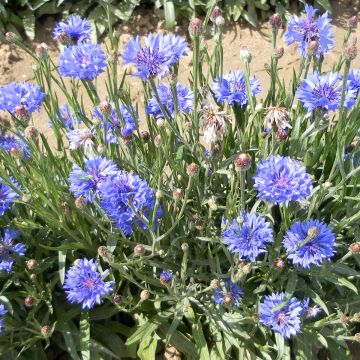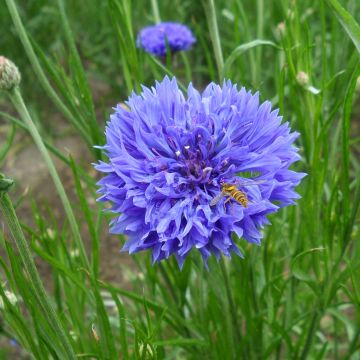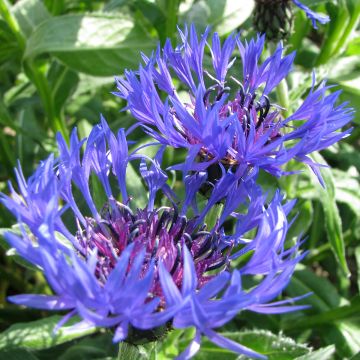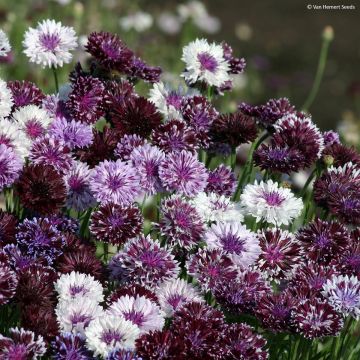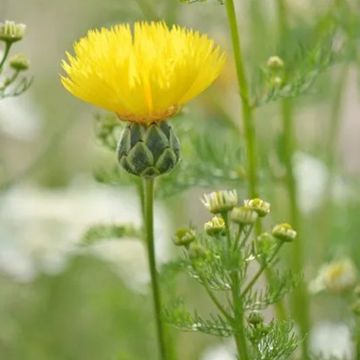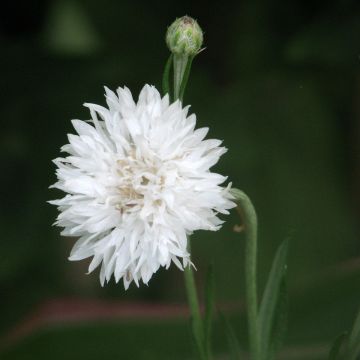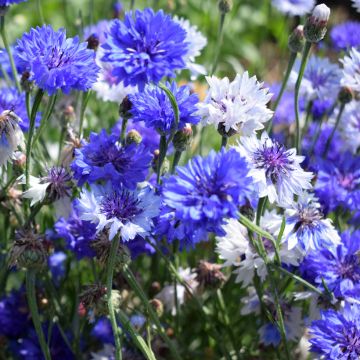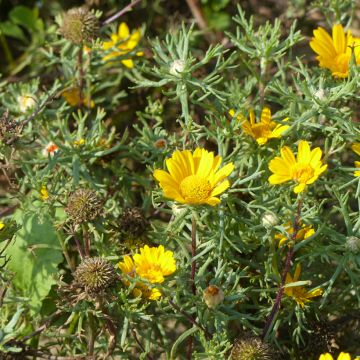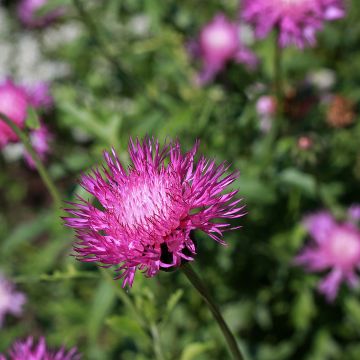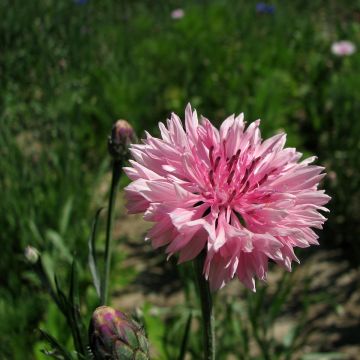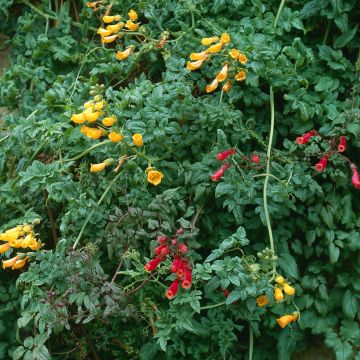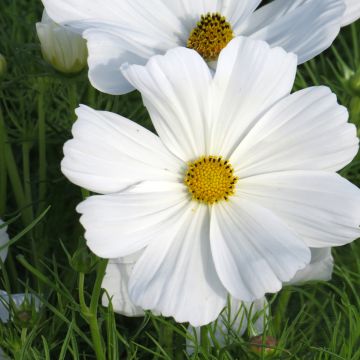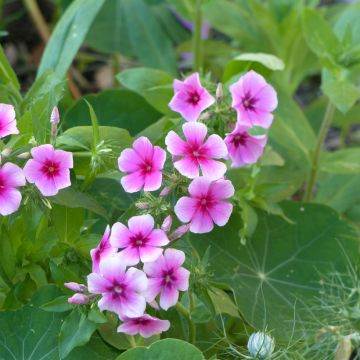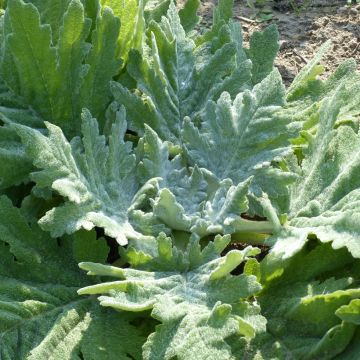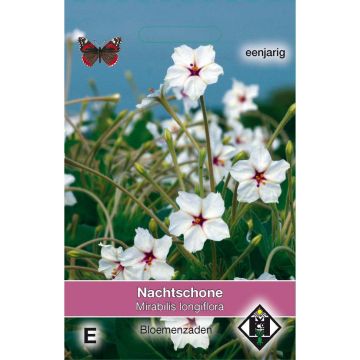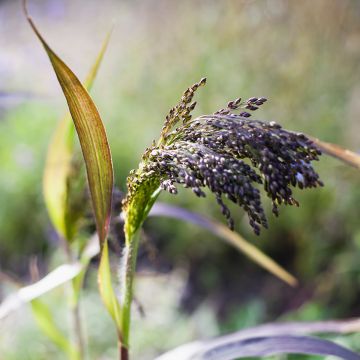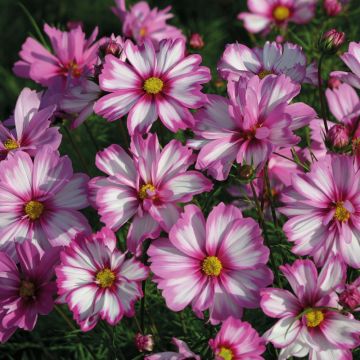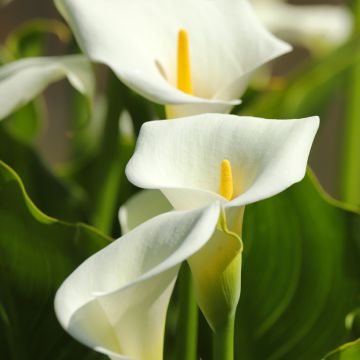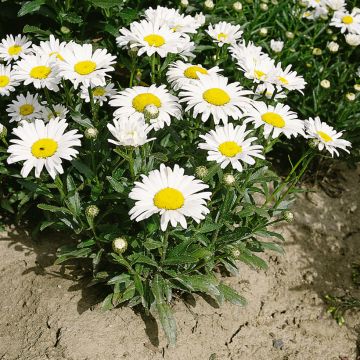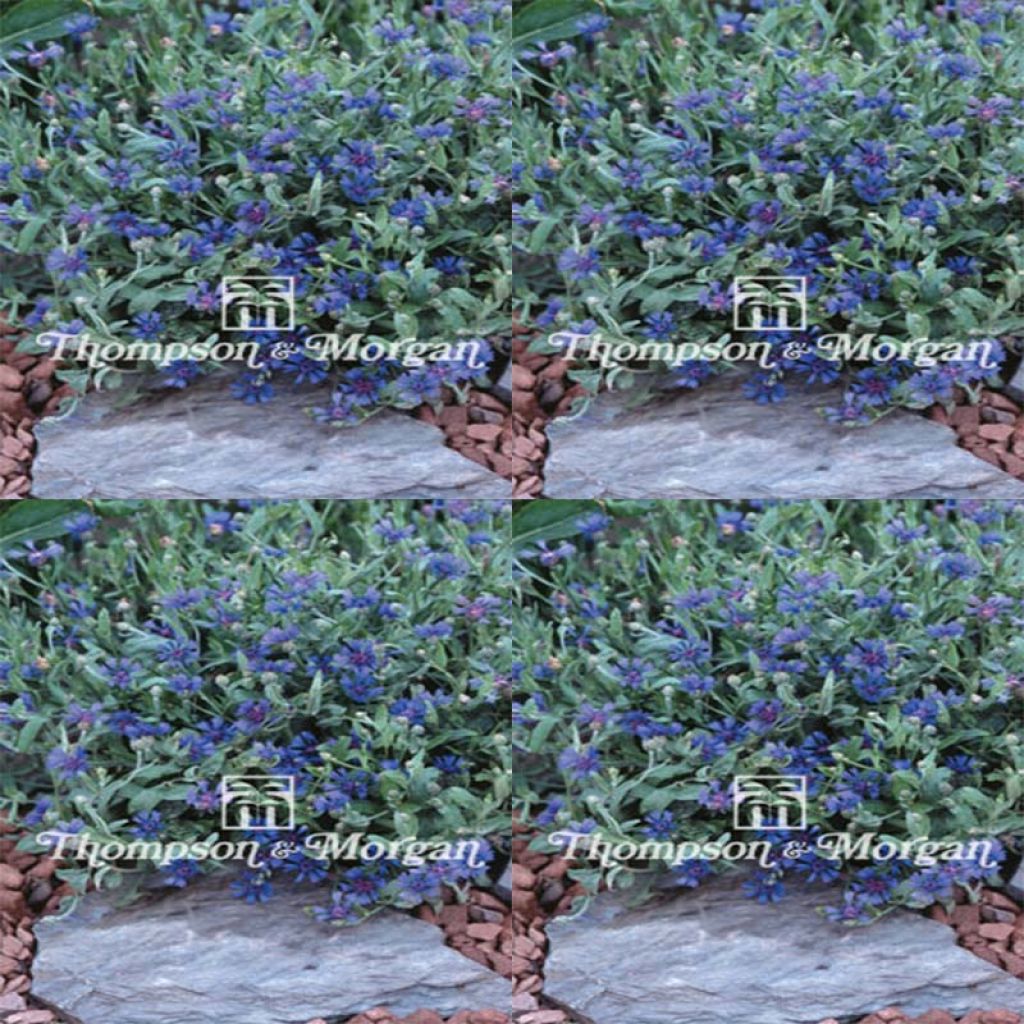

Cornflower Trailing Blue Carpet Seeds - Centaurea cyanoides
Cornflower Trailing Blue Carpet Seeds - Centaurea cyanoides
Centaurea cyanoides Trailing Blue Carpet
Why not try an alternative variety in stock?
View all →This plant carries a 6 months recovery warranty
More information
We guarantee the quality of our plants for a full growing cycle, and will replace at our expense any plant that fails to recover under normal climatic and planting conditions.
Seed-only orders are dispatched by sealed envelope. The delivery charge for seed-only orders is €3.90.
Does this plant fit my garden?
Set up your Plantfit profile →
Description
Centaurea cyanoides Trailing Blue Carpet
Centaurea cyanoides Trailing Blue Carpet belongs to the family Asteraceae. It is a cultivar derived from Centaurea cyanoides, an annual herbaceous plant native to Syria, Israel and that is also widespread in Cyprus. The plant grows spontaneously in degraded, arid zones such as garrigues and Mediterranean steppes. It forms in the space of one season, a dense, slightly mat-forming clump with tender stems, reaching 10 cm high and 45 cm wide, that bears very narrow, long, woolly, greyish-green leaves. It flowers from June to August, depending on the date of sowing, or earlier in milder climates. The inflorescences consist of flower heads, 2 cm across. The ligulate flowers (or the petals surrounding the centre) are toothed at their tips and are of very bright, medium-blue that is close to the hue of chicory flowers. The centre of the inflorescence is made up of purplish florets. The flowers are very melliferous and nectar-rich.
Cornflowers are enchanting in flowerbeds where they form remarkable patches of colour. The 'Trailing Blue Carpet' variety, a delightful descendant of the oriental cousin of the common cornflower, brings a fresh touch of new to our window boxes and rock gardens with its blue flowers. Sow it in wild-looking beds, in dry soils where it is beautiful combined with ornamental grasses such as Stipa tenuifolia or Muhlenbeckia capillaris, common poppies, with pink love-in-a-mist, California poppies, the surprising Callirhoe involucrata, or the prostrate mallow with its purplish-pink flowers. Little bright red carnations (Dianthus grationopolitanus) and basket of gold will go well with it in container displays.
Report an error about the product description
Flowering
Foliage
Plant habit
Botanical data
Centaurea
cyanoides
Trailing Blue Carpet
Asteraceae
Middle East
Other Centaurea seeds
Planting and care
Sow cornflower 'Trailing Blue Carpet' seeds outside, in their final positions, in March-April. Choose a sunny spot with well-drained soil that has been well-prepared and raked to a fine tilth. Sow thinly, to a depth of 3 mm, spacing the seeds 30 cm apart. Water regularly, especially during dry periods. Germination usually takes 14-21 days. When the cornflower seedlings are large enough to be handled, transplant them 15 cm apart.
An alternative is to sow them indoors from August to September to obtain blooms at the beginning of summer, the following year. Sow the cornflowers on the surface of good quality soil at a temperature of 18-23 °C, and cover with a sprinkling of very fine garden compost or vermiculite. Keep the seedlings in the light as this helps germination. When the seedlings are large enough to be moved, transplant and grow them in a place sheltered from the cold until the seedlings are large enough to be moved outside. Grow the cornflower seedlings in a frost-free place before planting out the following spring, or pricking them out in pots. Dwarf Syrian cornflower thrive in well-drained soils, even dry ones, in full sun.
Sowing period
Intended location
This item has not been reviewed yet - be the first to leave a review about it.
Flower seeds
Haven't found what you were looking for?
Hardiness is the lowest winter temperature a plant can endure without suffering serious damage or even dying. However, hardiness is affected by location (a sheltered area, such as a patio), protection (winter cover) and soil type (hardiness is improved by well-drained soil).

Photo Sharing Terms & Conditions
In order to encourage gardeners to interact and share their experiences, Promesse de fleurs offers various media enabling content to be uploaded onto its Site - in particular via the ‘Photo sharing’ module.
The User agrees to refrain from:
- Posting any content that is illegal, prejudicial, insulting, racist, inciteful to hatred, revisionist, contrary to public decency, that infringes on privacy or on the privacy rights of third parties, in particular the publicity rights of persons and goods, intellectual property rights, or the right to privacy.
- Submitting content on behalf of a third party;
- Impersonate the identity of a third party and/or publish any personal information about a third party;
In general, the User undertakes to refrain from any unethical behaviour.
All Content (in particular text, comments, files, images, photos, videos, creative works, etc.), which may be subject to property or intellectual property rights, image or other private rights, shall remain the property of the User, subject to the limited rights granted by the terms of the licence granted by Promesse de fleurs as stated below. Users are at liberty to publish or not to publish such Content on the Site, notably via the ‘Photo Sharing’ facility, and accept that this Content shall be made public and freely accessible, notably on the Internet.
Users further acknowledge, undertake to have ,and guarantee that they hold all necessary rights and permissions to publish such material on the Site, in particular with regard to the legislation in force pertaining to any privacy, property, intellectual property, image, or contractual rights, or rights of any other nature. By publishing such Content on the Site, Users acknowledge accepting full liability as publishers of the Content within the meaning of the law, and grant Promesse de fleurs, free of charge, an inclusive, worldwide licence for the said Content for the entire duration of its publication, including all reproduction, representation, up/downloading, displaying, performing, transmission, and storage rights.
Users also grant permission for their name to be linked to the Content and accept that this link may not always be made available.
By engaging in posting material, Users consent to their Content becoming automatically accessible on the Internet, in particular on other sites and/or blogs and/or web pages of the Promesse de fleurs site, including in particular social pages and the Promesse de fleurs catalogue.
Users may secure the removal of entrusted content free of charge by issuing a simple request via our contact form.
The flowering period indicated on our website applies to countries and regions located in USDA zone 8 (France, the United Kingdom, Ireland, the Netherlands, etc.)
It will vary according to where you live:
- In zones 9 to 10 (Italy, Spain, Greece, etc.), flowering will occur about 2 to 4 weeks earlier.
- In zones 6 to 7 (Germany, Poland, Slovenia, and lower mountainous regions), flowering will be delayed by 2 to 3 weeks.
- In zone 5 (Central Europe, Scandinavia), blooming will be delayed by 3 to 5 weeks.
In temperate climates, pruning of spring-flowering shrubs (forsythia, spireas, etc.) should be done just after flowering.
Pruning of summer-flowering shrubs (Indian Lilac, Perovskia, etc.) can be done in winter or spring.
In cold regions as well as with frost-sensitive plants, avoid pruning too early when severe frosts may still occur.
The planting period indicated on our website applies to countries and regions located in USDA zone 8 (France, United Kingdom, Ireland, Netherlands).
It will vary according to where you live:
- In Mediterranean zones (Marseille, Madrid, Milan, etc.), autumn and winter are the best planting periods.
- In continental zones (Strasbourg, Munich, Vienna, etc.), delay planting by 2 to 3 weeks in spring and bring it forward by 2 to 4 weeks in autumn.
- In mountainous regions (the Alps, Pyrenees, Carpathians, etc.), it is best to plant in late spring (May-June) or late summer (August-September).
The harvesting period indicated on our website applies to countries and regions in USDA zone 8 (France, England, Ireland, the Netherlands).
In colder areas (Scandinavia, Poland, Austria...) fruit and vegetable harvests are likely to be delayed by 3-4 weeks.
In warmer areas (Italy, Spain, Greece, etc.), harvesting will probably take place earlier, depending on weather conditions.
The sowing periods indicated on our website apply to countries and regions within USDA Zone 8 (France, UK, Ireland, Netherlands).
In colder areas (Scandinavia, Poland, Austria...), delay any outdoor sowing by 3-4 weeks, or sow under glass.
In warmer climes (Italy, Spain, Greece, etc.), bring outdoor sowing forward by a few weeks.

































